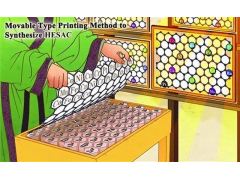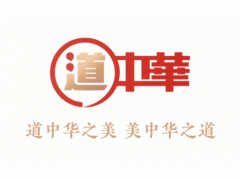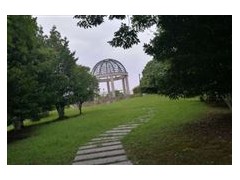In a world without Internet, telephone, TV, and radio,printmedia used to be the most important communication tool. During the period of the French Revolution, which had a far-reaching impact on the world, widely disseminating political ideas to the people was the only way to fight for power, and theprintingmedia, as the only way, played an important role in this period. What role did printing play in the French Revolution? Printing is not only a record of events that have taken place, it is itself part of events, printing has contributed to the occurrence of events it records, and it is an active force in history, especially during the period 1789-1799, when, The struggle for power is the struggle for control of public opinion. The book "Revolution in Printing: French Publishing, 1775-1800" provides a new perspective for studying the French Revolution as a whole by examining the printing industry. This article is the article "A Provincial Perspective" of the book, through the perspective of the province of Franche-Comté, to have a look at the situation at that time. The Paper is authorized by Shanghai Education Publishing House.
During the three centuries preceding the Revolution, the circulation of books in Franche-Comté had grown enormously, both within the circles of the cultural elite and among the poorer villagers. Of course, the type of publication and the degree of dissemination will vary according to the different literary needs of different social classes and where the readers live. Franche-Comté's population is scattered, with only 20% of the population living in the city. As the spread of printed matter of all kinds accelerated during the Revolution, Franche-Comté, and indeed all of France, entered a new phase of literate culture. Especially the villagers, who received a large number of posters, pamphlets and short articles, and also saw newspapers.
Book Transmission Before 1789
Franche-Comté's publishing situation is unique in several respects. While this frontier region has its own tradition of independence, it is not bound by a backward provincial mentality. Franche-Comté is situated exactly at a crossroads leading to the important printing centers of Paris, Lyon and Switzerland, so there is a busy circulation of books. This region also has the task of linking Switzerland with Lorraine, Burgundy, and the interior provinces of France. Here, in addition to the overt, licensed book trade, there is the illicit trafficking of printed matter through underground channels.
The inhabitants of Franche-Comté are in an area within easy reach of the publications of the famous publishing centers, so a large part of the publications purchased come from these publishing centers. People buy books when they travel, but more often they do so through titles and subscriptions. Because the local book production is far from meeting the needs and interests of readers, especially those who are well-educated, booksellers in Franche-Comté—mainly 25 of them—will place orders with these publishing centers. Eight local printers mainly print religious pamphlets, primers and traditional popular books, and occasionally some theological books, local or regional history books, or legal and medical texts, but these still cannot satisfy the local needs. residents' needs.
Franche-Comté's cultural elite is relatively small. In 1789, out of a total resident population of about 800,000, there were only about 10,000 educated citizens who regularly read, of which about 3,500 were priests, 2,000 nobles (the level of education in this group also varied greatly), 2,000 middle-class professionals, mainly lawyers and notaries, but also many doctors and some engineers and businessmen. There are 15 schools distributed in different towns with less than 3000 students. Under such circumstances, the book market, especially the expensive ones, is still limited - usually only 400-700 potential customers. Thus, a book such as the Almanach historique de Besançon et de Franche-Comté (Almanach historique de Besançon et de Franche-Comté) aimed at an educated public was printed in one edition 500 copies were ordered. Father Guillaume's historical work Sires de Salins was printed in quarto, and a edition of 700 copies was sold on order. We also know that the 1777 quarto Encyclopedia also had 392 subscribers. The weekly Les Affiches de Franche-Comté, founded in 1766 and aimed at the same public, has struggled, which explains its many interruptions Condition.
Although the market size is limited, cultural elites still have an accepting attitude towards modern concepts and development trends, which can be seen at least from their libraries, because their libraries often have hundreds or even more than a thousand books. roll. On the bookshelves, alongside the ancient volumes that have been passed down from generation to generation, are newly published works.
The elite's initial reaction to the Encyclopedia was fanatical. In fact, the success of the Neuchâtel edition (1777) shocked the booksellers of Franche-Comté, and there are other indications of this enthusiasm for encyclopedic knowledge. In 1772-1773, Jean-François Lepin, the bookseller of Saran, fought for the Encyclopedia in Franche-Comté's several crates to enter through Morez (Morez). ) did not hesitate to start a series of rounds with the customs. He repeatedly asked for help from a friend of his, Faton, Deputy Royal Representative, who wrote several times to the Governor General on his behalf. He wrote on December 8, 1773: "My dear Griois, I again ask you for a pass for two crates of the Geneva edition of the Encyclopedia, which are now In Les Rousses, it belongs to Lepin, the bookseller of Salins. The only books banned are the editions of Yverdon... I ask you to send a permission to the customs tomorrow , because Le Pin is really anxious at the moment.” Moreover, the Franche-Comté Proclamation published ten advertisements for the sale of the Encyclopedia in separate volumes, which shows that there is a Very active used book market.
The noblesse de la robe (noblesse de la robe) kept up with the trend of the times. The mayor of Vezet, while still cautious about new ideas, is buried in his philosophy books. Voltaire was then living in nearby Ferney, but was also well known in Franche-Comté, and his works were widely read, especially in the legal circle. But Rousseau's influence was greater. François Ferdinand Joseph Brenez, a lawyer living in Lons-le-Saunier, died in 1788, just before the start of the Revolution, when there were A certain influential lawyer has a private collection of books, his library is a typical example. He was one of the subscribers to the quarto Encyclopedia of Neuchâtel in the Jura and, in addition to the 36 volumes of the Encyclopedia, he owns all works by Rousseau, Montesquieu and Voltaire , and Father Renard's "Philosophical and Political History of European Colonization and Trade in the East and West Indies" and Buffon's "Natural History" (Histoire naturelle). He also has the works of Diderot and Helvetius. Among his fictional collections are Tableau de Paris and 2440 by Sébastian Mercier. In all, he has a collection of more than 1,000 volumes. Born into a family of notaries, Brenet had some connections with the lower local nobility; he was also a member of the Musketeers and the Freemasonry in his town.
In addition to the well-known works of Enlightenment thought, the cultural elite also bought various other works. A recent study of the legal community in Besançon found that "the proportion of religious books in libraries is declining". The shelves in the library are stocked with science and art books, as well as some local histories - out of local pride - and lots of fiction. The elite were particularly enthusiastic about fiction books, and some of the local aristocrats ordered La Bibliothèque universelle des romans (Book of Legends of the World).
The Franche-Comté Proclamation reveals the reading taste of the time, and the advertisements of the Besançon booksellers show where that taste was headed. Of the 377 advertised works (from 1766 to 1773), 8.4% were theology, 7.6% were jurisprudence, 21.4% were history, 28.6% were belles-letter, and 33.6% were arts and sciences. It can be seen that the booksellers of Besançon acted as an intermediary in the formation of Franche-Comté's reading habits.
With this act of reading and the exchange of books in small groups, a new social life began to develop. Three cities, Besançon, Saint-Claude and Vesoul, have public libraries. Readers' clubs and societies also popped up. In the small town of Saint-Amour in 1771, "some persons of some influence" asked the authorities to allow them "to rent a room for their meetings, reading newspapers, playing games, etc. Like the kind that other municipalities in the province have had for a long time." In Besançon, booksellers Pierre-Etienne Fantet (a friend of Voltaire's) and Dominique Lepagnez opened reading rooms. A clergyman of Saran claimed to have borrowed volumes of the Encyclopedia from a lawyer. In this way, the sphere of influence of books goes far beyond the limited circle of book owners.
So in rural areas, how is the dissemination of books? We must first remember that Franche-Comté is located in the north-east of France, where the literacy rate is relatively high. The reason why the villagers can study is because of the diligence and enthusiasm of some priests. The Counter-Reformation provided the basis for increasing literacy in Franche-Comté; the clergy used books, in addition to religious images and objects, to spread Catholicism in homes and convert villagers. In the dissemination of religious books, the clergy benefited from a well-established commercial network of large booksellers, news purveyors, and itinerant vendors who, although they had their own shops, went door-to-door in the mountains to sell small wares.
The clergy of Franche-Comté facilitated the spread of religious publications in many ways. For example, Meallet de Farges, bishop of St. Cloud, distributed free pamphlets in his diocese extolling piety. The missionaries of Beaupré were active in different parishes for a century, going from house to house with booksellers licensed by the authorities, searching for bad books and distributing religious books. The missionaries themselves became publishers, and on July 20, 1780, they received permission to print Reflections on the Most important Truths of Christianity (Les Pensées sur les plus importantes vérités du christianisme, twelve mo Written by one of the missionaries, an edition of 10,000 copies was printed at the time. Many families keep collections of religious songs not only for church services but also for reading at home. A handbook for the clergy entitled Méthode pour la direction des ames (1782–83) (Méthode pour la direction des ames, 1782–83) clearly explained the need for Christian families to keep devotional books. Its author, Joseph Pochard, a former priest and director of the Seminary of Besançon, mentioned it four times: "If a good priest finds that there are families without crosses, religious images, or prayer books, If I hadn’t, I’d be very sorry.” He also recommends a thought-provoking book at the end of the night sitting around the fire, and for this purpose he recommends a number of suitable books, including the above The mentioned Reflections on the Most important Truths of Christianity, as well as Pensez-y bien (Pensez-y bien), L'Introduction à la vie dévote (Introduction à la vie dévote) and Le pédagogue chrétien).
What effect did these activities have on the public? The survey found that only 6% of the rural population (farmers, daily wage workers, viticulturists) had books, of which 80% were religious books. As a result, religious books far outnumbered popular storybooks and almanacs.
In the years before the Revolution, books were widely distributed among all classes in Franche-Comté. The kinds of books are very different, and the reasons for dissemination are also very different. Sometimes intellectual curiosity and tastes of modernity determine reading habits; other times, as we have discovered, religious propaganda plays a role. The books that eventually reached the peasants were quite different from the works of the Enlightenment, and in fact, the works of the Enlightenment were not necessarily available in the large elite libraries. In Franche-Comté, however, the abundance of devotional books suggests that at least a portion of the rural population was actually able to read. The peasants were probably poised to wait until after 1789, when the time came, for a smooth transition to the reading of secular literature.







